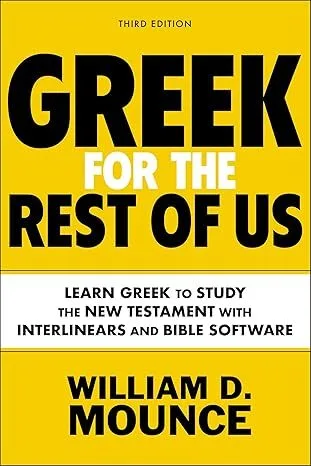Strong’s G4929: A compound verb combining σύν (with) and τάσσω (to arrange), συντάσσω expresses the act of giving or following specific instructions. In the Gospels, it emphasizes complete obedience to divine directives, particularly in contexts of fulfilling the Messiah’s commands.
U – Unveiling the Word

Key Information
συντάσσω

Strong’s Entry
g4929
συντάσσω (suntasso) represents the giving and following of detailed instructions or arrangements. This compound word emphasizes orderly arrangement and precise direction. In the New Testament, it appears in contexts where exact obedience to divine instructions is crucial, particularly in the disciples’ preparation for the Last Supper. Early church writers used this term to emphasize careful adherence to apostolic teaching and divine commands. Today, it reminds us of the importance of precise obedience to God’s instructions and the blessing that comes from following His directives exactly.
N – Necessary Information
- Greek Word: συντάσσω, suntasso, /sün-tas’-sō/
- Pronunciation Guide: soon-TASS-oh (where ‘ss’ is as in “pass”)
- Part of Speech: Verb
Etymology:
- σύν (syn) – prefix meaning “with, together”
- τάσσω (tasso) – verb meaning “to arrange, order”
- The combination emphasizes arranged instructions
D – Defining Meanings
- To arrange together
- To command, direct
- To prescribe specific instructions
For compound words:
The prefix σύν adds completeness to the arranging action of τάσσω, creating a word expressing thorough organization or precise instruction.
Translation Options:
- “to direct precisely” – emphasizes exact instruction
- “to arrange completely” – highlights thorough organization
- “to command specifically” – focuses on detailed direction
E – Exploring Similar Words
- τάσσω (tasso) /tas’-so/ – to arrange, appoint
See G5021 - διατάσσω (diatasso) /dee-at-as’-so/ – to command, ordain
See G1299 - ἐπιτάσσω (epitasso) /ep-ee-tas’-so/ – to command, order
See G2004
R – Reviewing the Word’s Morphology
Verbal Features:
- Tense: Aorist
- Voice: Active
- Mood: Indicative
- Person: 3rd
- Number: Singular
- Aspect: Perfective
Examples of forms:
- συνέταξεν (he commanded)
- συντάξας (having commanded)
S – Studying Lexicon Insights
BDAG emphasizes the word’s use in giving specific instructions. Thayer’s notes its connection to divine commands. LSJ provides examples from military and administrative contexts. Vine’s connects it to authoritative direction. Strong’s highlights the organizing aspect of the root word. LEH and Moulton and Milligan note its frequent use in official directives.
T – Tracing the Scriptures
First appearance:
Matthew 26:19: “The disciples did as Jesus had directed [συντάσσω] them; and they prepared the Passover.”
Additional References:
Matthew 27:10
A – Analyzing Classical Usage
| Author: Work | Text |
|---|---|
| Xenophon: Cyropaedia | “The general arranged [συντάσσω] the battle formations precisely” |
| Thucydides: History | “The rulers commanded [συντάσσω] the exact procedures to follow” |
| Plato: Laws | “The lawgiver prescribed [συντάσσω] detailed regulations for the city” |
N – Noteworthy Summary
συντάσσω beautifully illustrates the importance of precise obedience to divine instruction. This word proclaims the good news that God provides clear direction for His people. It reminds us that blessing follows careful attention to His commands, just as the disciples’ obedience led to the preparation of the Last Supper where the Messiah instituted the New Covenant.
D – Did You Know?
- συντάσσω appears only in Matthew’s Gospel
- It’s used in contexts of preparing for significant spiritual events
- The word influenced early Christian liturgical instructions
Strong’s G4929: A compound verb combining σύν (with) and τάσσω (to arrange), συντάσσω expresses the act of giving or following specific instructions. In the Gospels, it emphasizes complete obedience to divine directives, particularly in contexts of fulfilling the Messiah’s commands.
Part of speech: Verb
Tags: instructions, commands, obedience, divine direction, Matthew’s Gospel, Last Supper, preparation, compound words, Greek verbs, authority, precise following
Note: While this entry strives for accuracy, readers engaged in critical research should verify citations and keyword occurrences in their Bible translation of choice. For Biblical citations, the F.O.G Bible project recommends Logos Bible software.
Strong's g4929
Add Comment
God's Word is too vast for a single perspective. We all have a story, and as believers we all carry the Holy Spirit who is the Revealer. With this in mind - I would love to read your comments.




